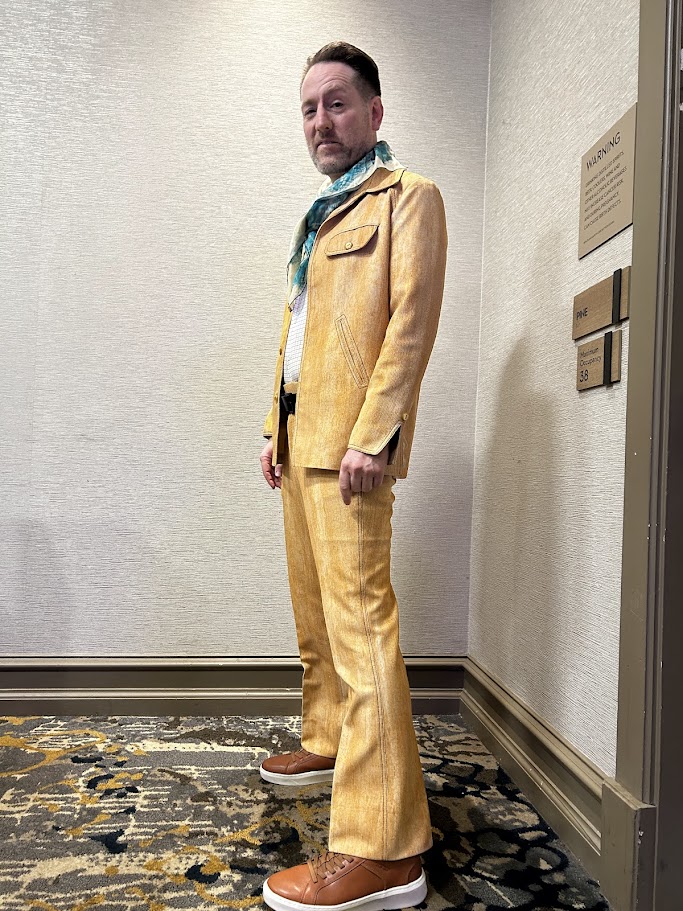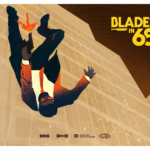GM: Lin
Players: Matt Webber, Sam Z, Antonio Morton, Kate Hill, Karen Twelves, Sean Nittner
System: Hot Tub Time Machine
Hot Tub Time Machine, written by Megan Coppock is a larp that asks “What if you could change the lives of the people who most impacted yours?”
Hot Tub Time Machine is a 4 hour theater larp for 6 people that can be described as modern art history meets the 2010’s movie by the same name.
Time Traveling characters will accidentally travel through time, trying to change as much – or as little – as possible. They will deal with the repercussions of their actions with an ever-changing future. Their larp play will be contiguous through the hot tub. Note that we are currently unable to promise a hot tub for this game and we will use what is available.
Linear Travel characters will be playing out a series of scenes while making big life decisions at the end of each that changes their timeline. The characters are influenced by the notable artists and events that converged in the New York City art scene in the 1950s, 60s, 70s and 80s.
Leslie Hopkins
I was cast as a Leslie, an artist who specialized in abstract expressionism and action painting, inspired by Jackson Pollock, Lee Krasner, Georgia O’Keeffe, and Andy Warhol.
Leslie had a difficult childhood growing up in a small town but truly came into his own when he moved to New York, first temporarily for school and then, after his brother Lionel died and he felt blamed by his family for being a bad influence, he went back to stay. This best friend Dee wired him the funds for a bus ticket and that was the last time he saw small town America.
When WWII broke out, Leslie rejected he German Bauhaus movement he had previously been inspired by because of its connections to Nazism. CIA recruiters tried to bring him in to help spread “American Culture” but he rejected them as well. Instead he worked with his friends Dee and Hollis to put on events supporting and young artists as well as to put out their own work. The game started right after the first K.I.P Gallery show in 1959, as everyone came back after the show to Leslie and Dee’s apartment to celebrate and keep the good times rolling.


The Play is the Thing
In each scene the linear time travelers (Leslie, Jess, and Libby) have a prompt for what to do in the scene. Mostly for me it was socialize, make sure people are having a good time, and try to keep connections alive so we can do this again in the future.
When the time travelers (Dee, AJ, and Hollis) arrived they were disoriented and most of our time with them was either trying to help them figure out what time it was, where we were at in our relationships, or that they weren’t on a bad acid trip.
At the end of each scene we made a choice (though some of them had to be made together) and that created a branching path for our futures (only one of which the time travelers knew from their own timeline). The choices for me weren’t too difficult. It was usually do a thing that enhances your career, supports your community and dives into art or distance myself from the world. In all the cases but one the “happier” choice was the natural one give what had happened in the scene. I’m all for sad characters (just wait for my next write up) but I don’t want them to be sad just for the sake of being sad.
The one choice that was hard was whether or not to pursue Jess. She and AJ were on again and off again in their relationship and (as of 1965) I had been mentoring her as an artist and growing closer to her, falling in love. Ultimately it was Hollis who told me that it wasn’t my place to tell her how I felt when she was still with AJ, and raising their daughter Sky as well. Out of character Kate and I talked about it and thought it would have been a compelling option to choose, but it wasn’t right for this run of the game.
In the final scene I did something very ridiculous and dramatic. We were having a memorial for Jean-Michel Basquiat.
His raw, expressive paintings combined street art, graffiti, and neo-expressionism to convey powerful messages about race, politics, and society. Basquiat’s work was characterized by vibrant colors, fragmented figures, and enigmatic symbols that merged text and image.
To celebrate the dichotomies he often plaid with, I told everyone to close their eyes and then I covered myself in both a black and a white tablecloth. I spoke of him and as I did I tried to peel off the layers, but the clung together and it all slid off me in a mess…maybe an artist mess. When I sad down AJ said he appreciated the performance art I could hear Jess and Libby sniggering as I said “It’s not performance art, it’s kinetic action painting!” Ah, that was a blast.
Thoughts on the Game
I had a real blast playing this game. I was grateful to have simple goals in each scene that were centered around caring for others rather than trying to get them to do something for me. Even when we did try to make things happen, they were for the good of all.
Some of the choices were hard, and I felt the absence, the opportunity cost, of choosing one over the other. A good sign they were compelling. I’m also glad I didn’t need to know that much about art to play as an artist. I had a handful of facts and ideas that got me through.
The connections with the characters felt real. Libby made me question turning down the CIA. Dee and I went way back and were there for each other through addiction, breakups, and pain. Jess and I made some amazing work together and maybe could have been something more. Hollis was my moral compass (ironic based on what I learned about him at the end) and he took my ideas for adding childcare services at work and really pushed to do it broadly in attempts to make the workplace more inviting and fair to women.
There were a couple of things that jarred me. We were able to work around them, but as the game is refined, I’d consider the following from a design perspective:
- There were many times when the choices we made as the linear time travelers resulted in massive differences that we had to reconcile (was a character famous and rich or poor and obscure, alive or dead, etc.). I think the branching paths, though they had some dependencies, still allowed for a lot of conflicts that it was upon the players to sort out.
- I also didn’t envy the time travelers. Because they never knew what was going on, they spent a lot of the scenes just trying to orient themselves.
[Art for the featured image: Untitled (1982) by Jean-Michel Basquiat]

